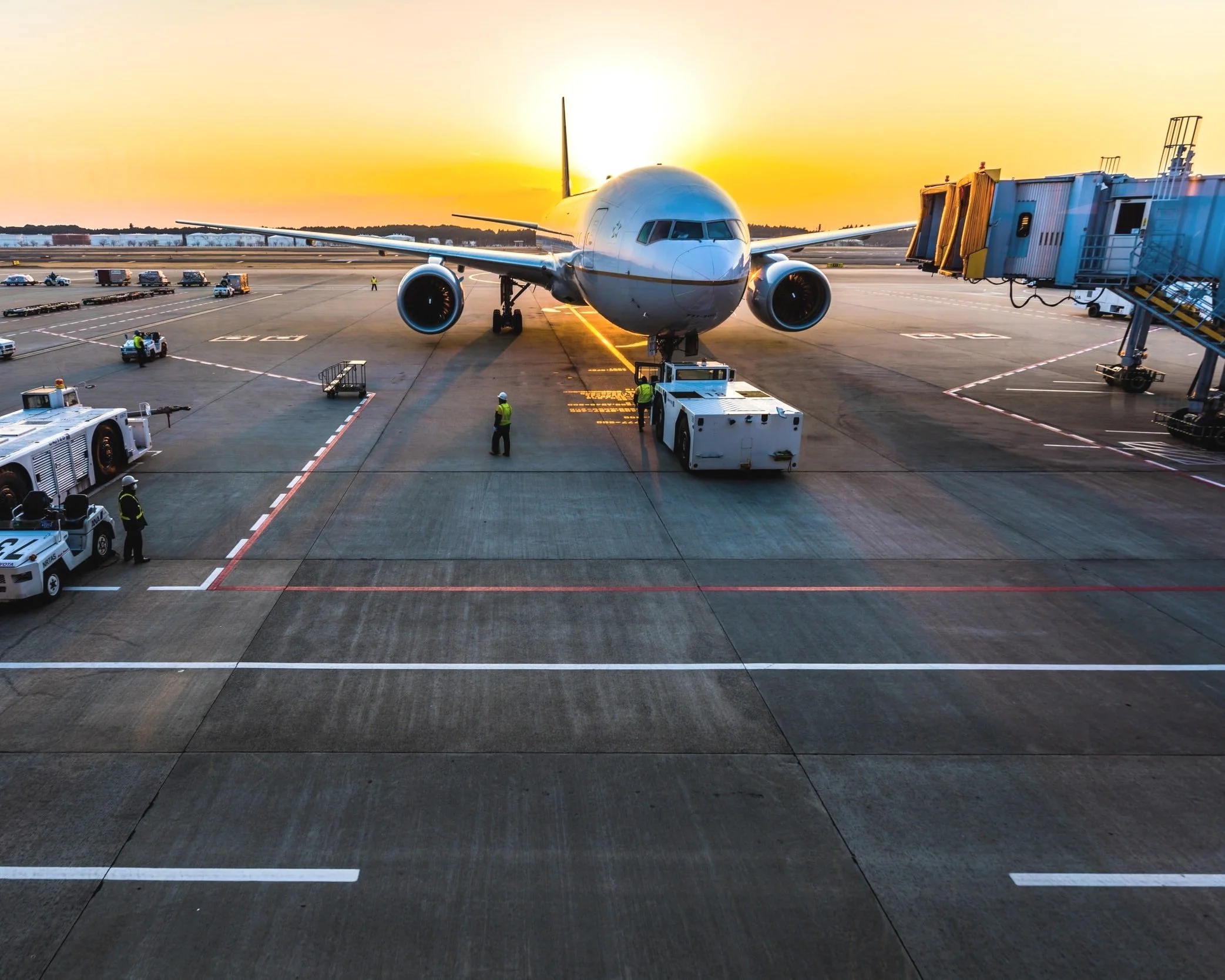Travel Guide to Manila: A Cultural Tour of the Philippine Capital
The City of Manila, the capital of the Philippines, is famously known as the “Pearl of the Orient'', because of its picturesque location, and enchanting sunsets from Manila Bay. The Manila name was given by Spanish historian Juan Delgado in 1751, in recognition of the city’s rich trade at the time.
In this article, you'll discover the history of Manila and get detailed information and recommendations on where to stay, how to travel around, where to eat and how to explore the top places to visit in Manila.
How Many Cities Are There in Metro Manila?
The City of Manila is different from Metro Manila, also known as the National Capital Region (NCR). Metro Manila is composed of 16 cities, and one municipality. One of those cities is the City of Manila. Pateros is the only municipality.
The other cities are Las Pinas, Makati, Malabon, Mandaluyong, Marikina, Muntinlupa, Navotas, Paranaque, Pasay, Pasig, Pateros, Quezon City, San Juan, Taguig and Valenzuela.
If you are coming to the Philippines, here is what you need to know about Manila International Airport NAIA Travel Guide, the main international gateway for travelers to the Philippines.
“Manila” used to be called “Maynilad”, which came from the word “Nilad”, a flowering plant that used to grow in the area. Manila is also locally called “Maynila.”
What are the Things to Know Before Coming to Manila?
Tagalog is the primary language spoken in Metro Manila, but the English language can easily be handled by most Filipino. Taglish, a mixture of two languages English and Tagalog, is mainly spoken in Manila and commonly used in other parts of the country.
Noticeably, many of the younger generations prefer to speak Taglish.
Located in Luzon, the northern main island of the Philippines, Manila is the main gateway to most of the popular tourist destinations and islands like Cebu, Palawan, Davao, and many other provinces in the country.
BUT, before leaving Manila, you should consider exploring its vast amount of activities, history, and culinary cultures.
With an estimated population of 14 million as of 2019, the population in Metro Manila is rapidly growing. The City of Manila, meanwhile, has a population of about 2 million.
Manila is a big city, occupying an area of around 38 square kilometers, and is the center of economic, social, political, and cultural activities in the Philippines. It is also home to the Malacañang Palace, which is the Philippine President’s place of residence.
The best time to visit Manila is during the dry season from December to May. Still, it is a great destination all-year-round - if you don’t mind the wet (rainy season) from June to the early part of October.
A Brief Discussion of the Rich History of Manila
Manila’s history is packed with stories of victory and loss on a difficult journey. If not for anything else, it is surely a resilient city - never failing to recover from all the challenges it has faced. These stories of war, survival, and revival are clearly manifested in influences left by several foreign countries.
The famous walled city of Intramuros is where the Spanish ruled their eastern empire for a very long time (from 1571 to 1898). It features baroque churches influenced by the Spaniards and vibrant markets and eateries. The historic Intramuros district is also where you’ll find the Manila Cathedral and the San Agustin Church.
There are a lot of corners to explore and restaurants to try out in this historic area of Intramuros, Manila. Don’t forget to take Instagram-worthy photos of cobblestone streets. You can also try riding the Kalesa, a colourfully painted and decorated two-wheeled horse-drawn carriage.
Learn about the Philippines’ National Hero, Jose Rizal, and his life at Rizal Park. Also called Luneta, it is also a place where you can learn about Manila’s history. The park, formerly called Bagumbayan, was where Rizal was executed. Stroll along Luneta Park, and you’ll find the Gallery of Heroes, the statue of Lapu-Lapu, and other historical landmarks.
Take some time to read our page about the brief political history of the Philippines to have a quick overview of the long and interesting history of politics and learn how the Philippine culture today came to be.
Where is the Ninoy Aquino International Airport, NAIA in Manila?
The Ninoy Aquino International Airport (NAIA, MNL) [pronounced as na-e-yeah), is the Philippines’ main airport, around a 20 to 30-minute drive to Manila, depending on road traffic. Most foreign tourists fly into NAIA, which is supposed to be the most convenient way to enter the country.
The Manila Airport or NAIA (Code: MNL), has four different terminals. One terminal is in Parañaque City, while the other three terminals are in Pasay City. Learn how to navigate the biggest and busiest airport in the Philippines’ capital by reading our detailed article about the Manila International Airport NAIA, Travel Guide.
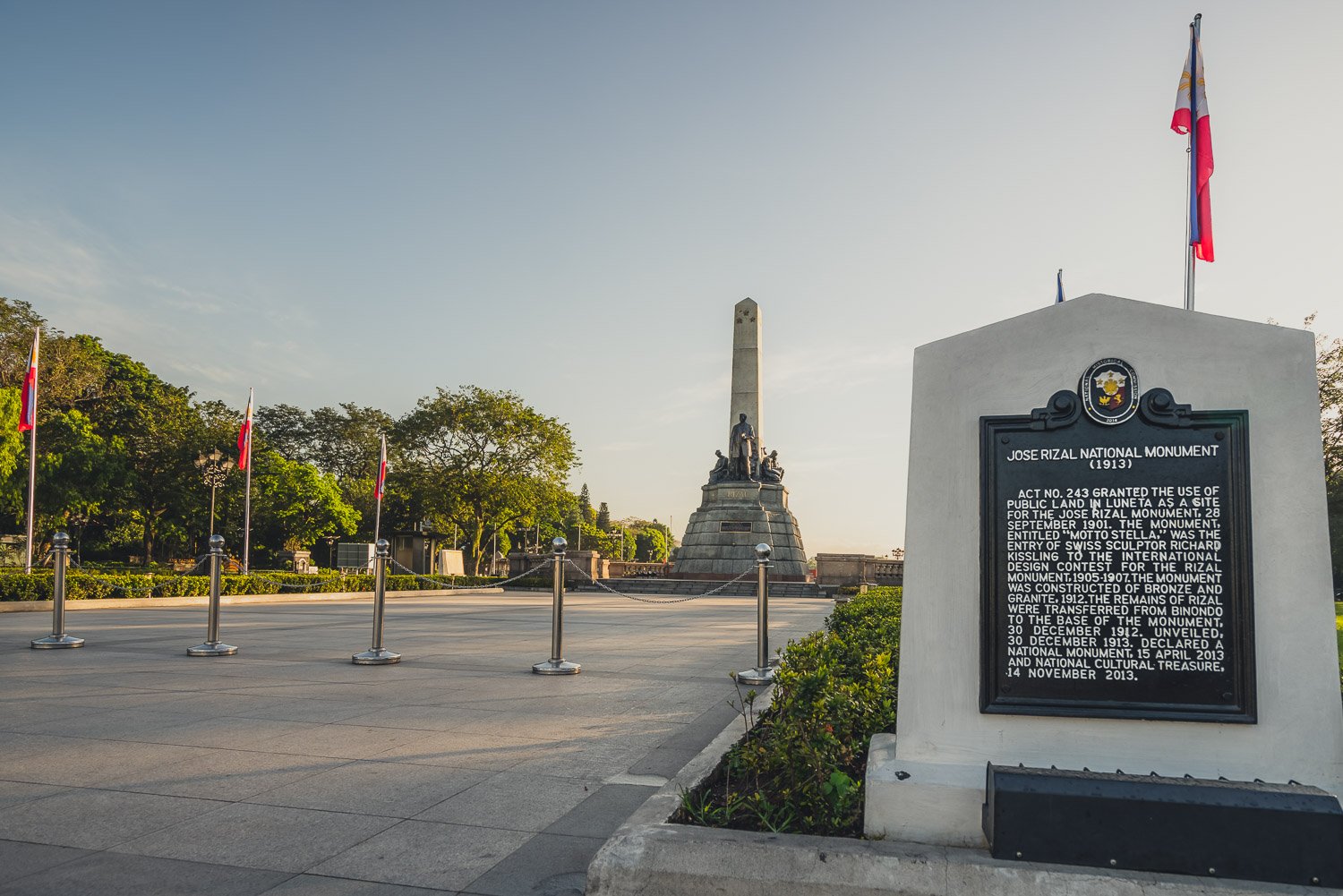
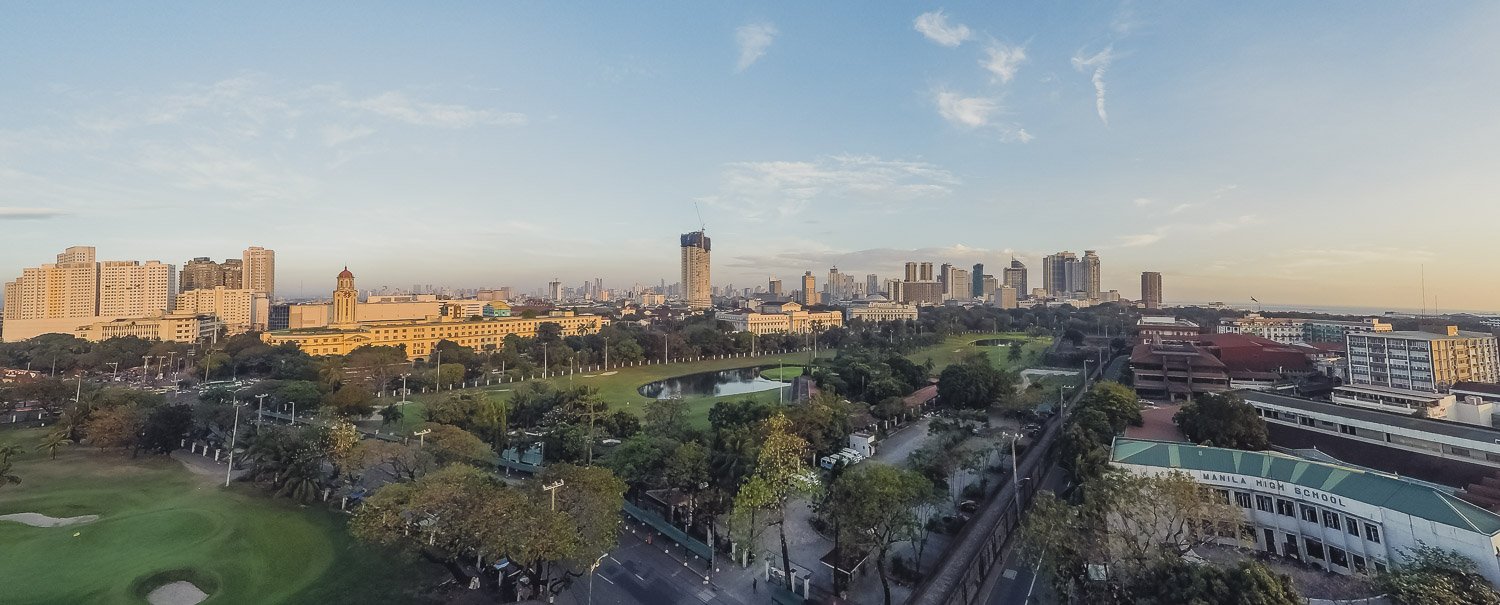
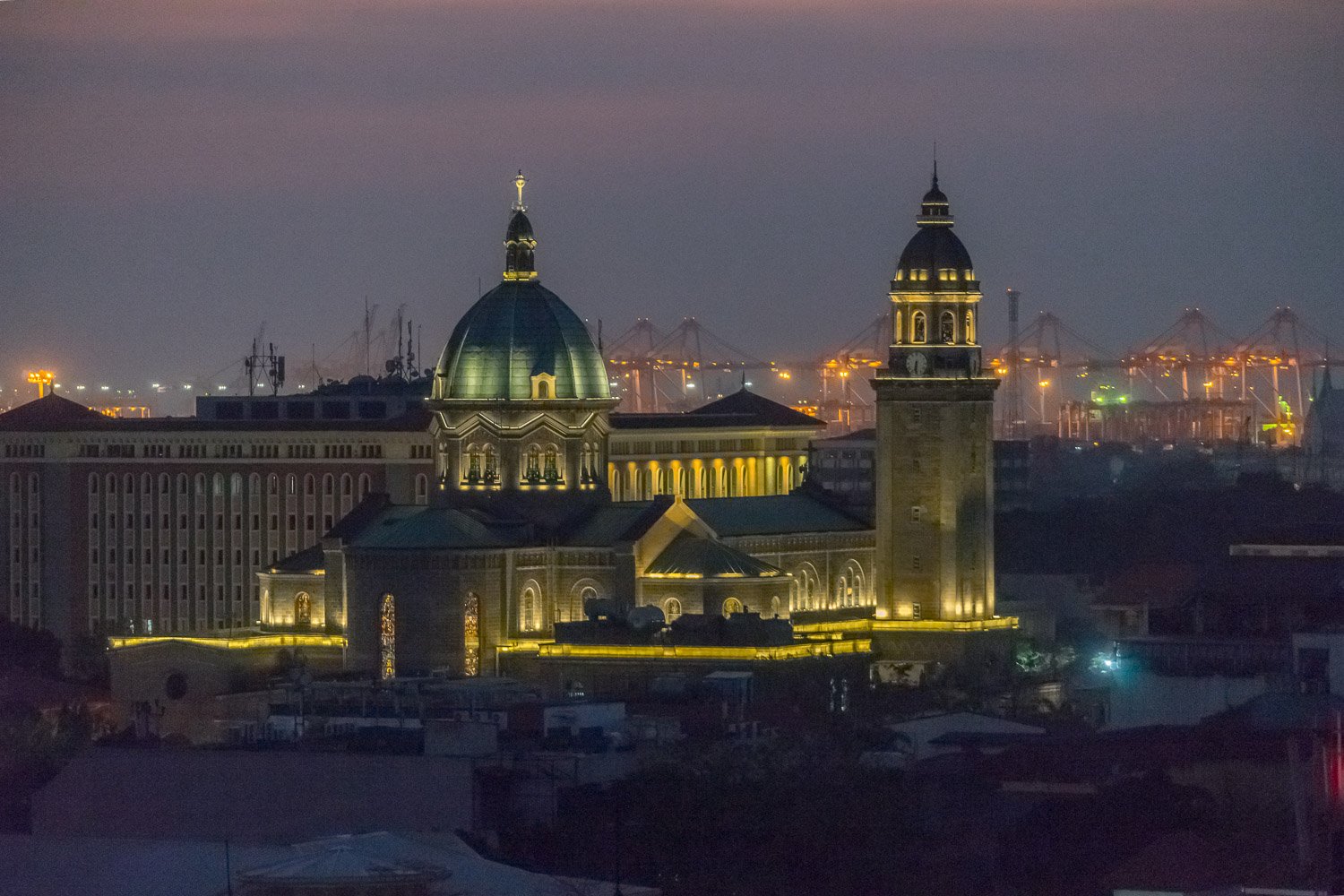
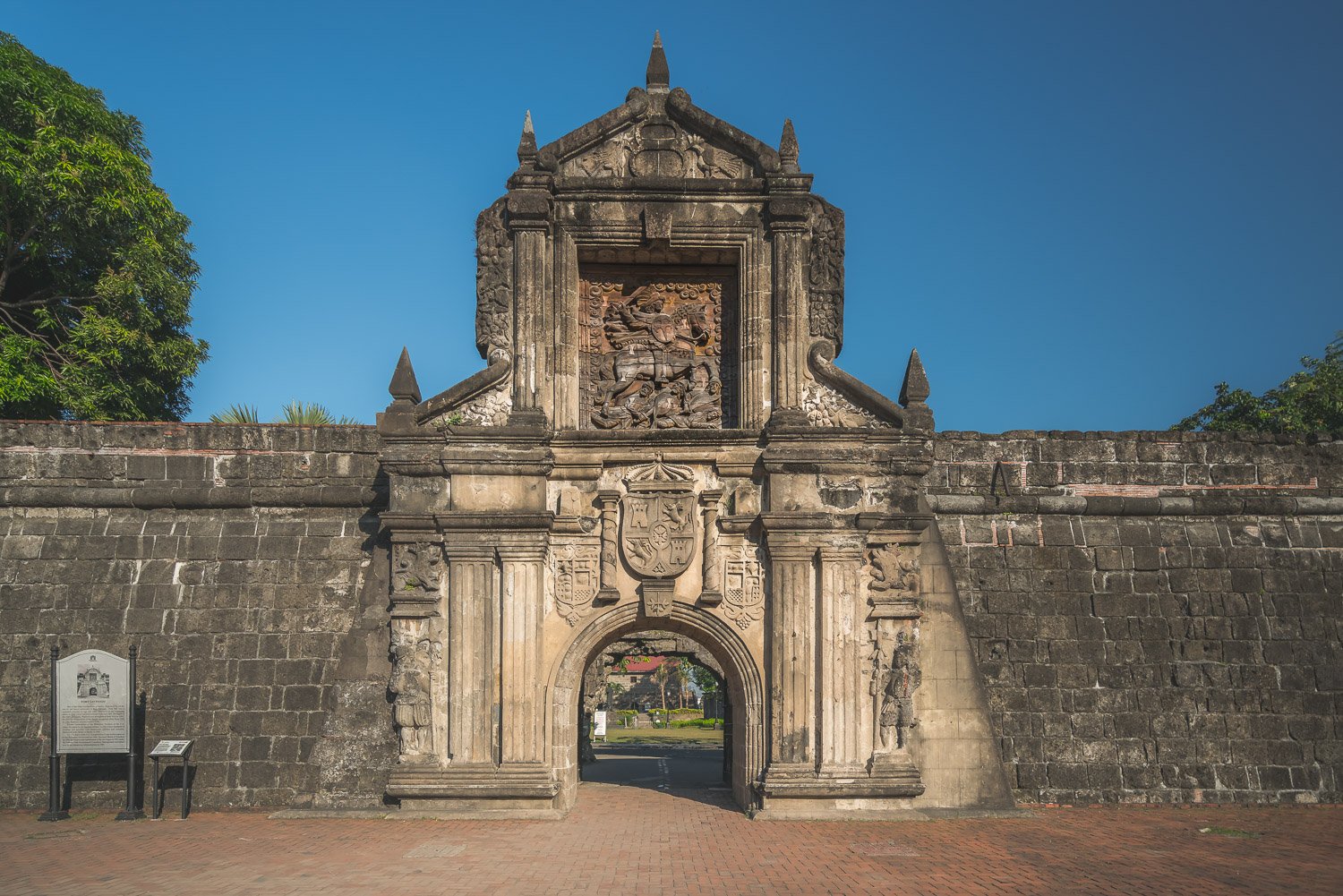
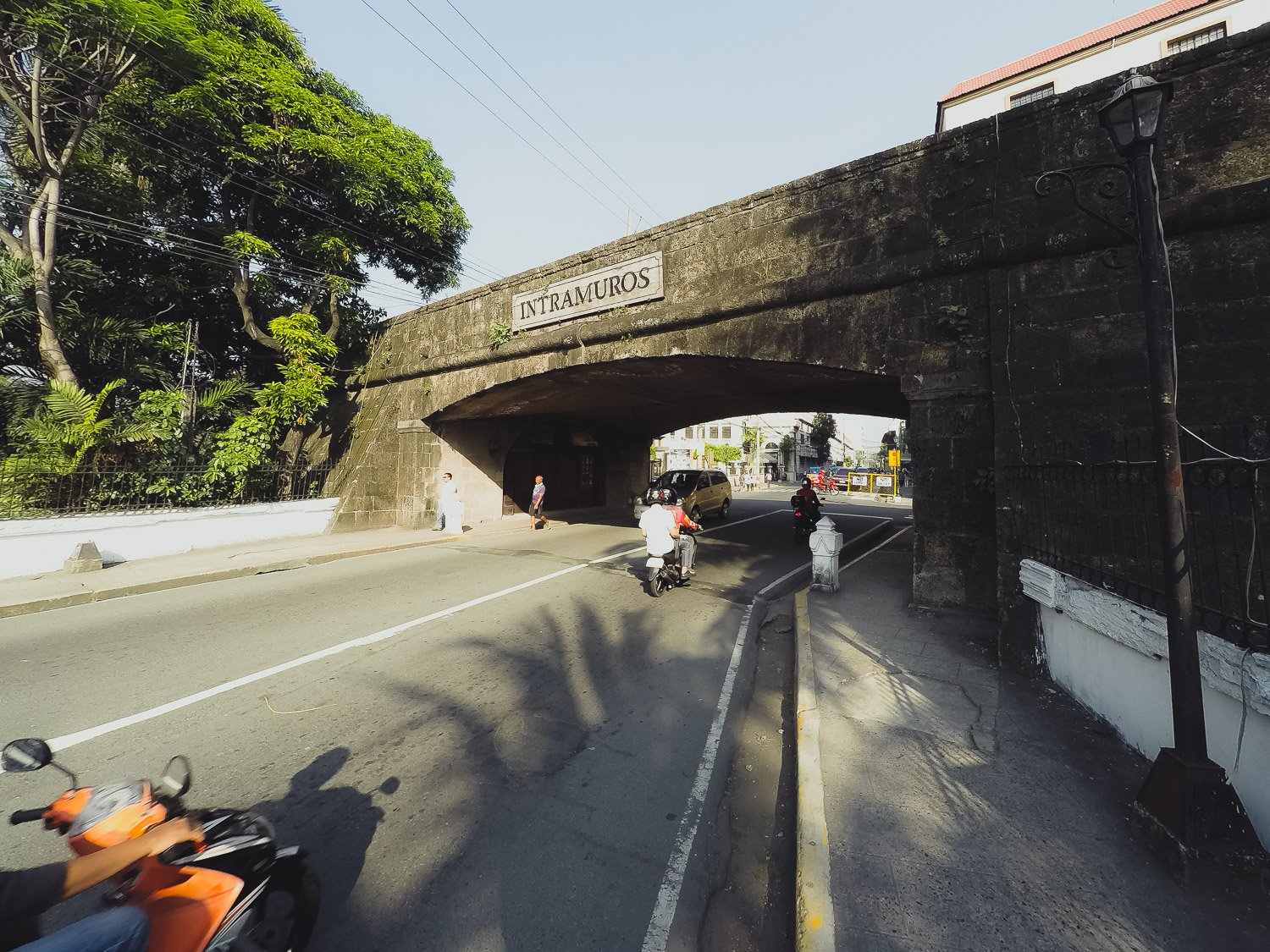

What is the Importance of Air Transport to Tourism in the Philippines?
The travel and tourism industries are vital sectors that shape the Philippine economy. NAIA serves as the main international gateway for foreign tourists in the country. In 2019, there were more than 8 million international tourist arrivals in the Philippines.
There are around 61 international airlines operating and directly flying into NAIA. The Airport can handle up to 13 million international passengers annually.
Booking a connecting flight to other destinations in the Philippines is the fastest option if you don't want to stay longer in Manila.
Most travel destinations in northern or southern Luzon (the northern main island of the Philippines) are reachable by public transport such as provincial buses and shared vans, or by private transportation like vans, car, or motorbike for shorter or even longer destinations. But if you are more adventurous and have some time to spare, a ferry is a great option for inter-island destinations in the Philippines.
Our complete guide about passport & Philippines visa guidelines is a must-read before coming to the Philippines. Be updated with the latest travel protocol about the Manila NAIA International airport.
How to Get Around Manila?
Going around Manila requires a lot of patience. If you are taking public bus transportation, expect long waiting queues and bad traffic conditions. But don’t worry; there are quite a lot of options for public transport in Manila.
There are trains, taxis, and the more local and unique ones, the iconic jeepneys, tricycles, and pedicabs (Manila’s own version of a rickshaw).
There’s also a ride-hailing platform called Grab, a convenient and recommended but pricier option. Grab is a Singapore-based ride-sharing company that works similar to Uber.
Find out more about the modes of transportation in Manila. Note that traveling around Manila is easy if you know the type of transportation to take, how much it costs, and if you know your exact destination.
What are the Best Accommodations in Manila?
From budget inns to expensive five-star hotels, there's an accommodation that you can find according to your budget. You could also try to book yourself an Airbnb to feel more at home if you wish. From lofts to one-bedrooms, your options are endless when finding the best accommodations in Manila.
-
What are the Best Guesthouses and Hostels in Manila?
If you’re looking to experience Manila nightlife, we recommend staying in manila guesthouses and hostels in these amazing Manila guesthouses and hostels. Meet other foreign tourists and local tourists as you book your accommodation from one of the lists below. The areas of P. Burgos and Poblacion in Makati are popular places to experience Manila nightlife.
• Bahay Kubo Hostel
• Lions Den Backpackers
• Lub D Philippines Makati
• Makati Junction
• Pink Manila Hostel
• RedDoorz
• ZEN Rooms
• Z Hostel -
What are the Best Budget Hotels in Manila?
There is a wealth of hotels in Metropolitan Manila, and many of them are located in business or tourist districts. The comfort of their guests is the top priority. Here are some best Manila budget-friendly hotels that are quite popular among foreign tourists.• City Garden Suites
• Go Hotels
• Gran Prix Hotel and Suites
• Hotel Merlo
• Regency Grand Suites
• Red Planet Hotels
• Riviera Mansion Hotel
• The Pearl Garden Manila
• White Knight Hotel Intramuros -
What are the Best Luxurious Hotels in Manila?
Being the National Capital Region, expect Manila to have the most number of 5-star and 4-star hotels in the Philippines. Whether you’re traveling to Manila for business or leisure, there are plenty of places to choose from. Watch out for special packages and discounts when you book your stay!
It’s also best to consider the places you want to visit so you can choose a nearer, more accessible hotel.
• City of Dreams - arguably the Philippines’ most luxurious resort, hotel, and casino, it is located on Asean Avenue and Roxas Boulevard in Parañaque City, Metro Manila.
• Makati Shangri-La - a renowned five-star luxury hotel in Makati City, is strategically located in the central business district of Makati City in Metro Manila and is very close to shopping malls.
• New Coast Hotel Manila - a deluxe five-star hotel, it is situated in the heart of Malate in the City of Manila.
• Raffles Makati - located in the central business district, along Makati Avenue, Makati City, Metro Manila, it is close to Makati City’s nightlife.
• Resorts World Manila - it is the first and largest integrated resort in the Philippines. It is an entertainment and leisure destination located in Newport City, opposite the NAIA Terminal 3 in Pasay City, Metro Manila.
• Sheraton Manila Hotel - this 5-star luxury hotel in Pasay City is located right across the NAIA Terminal 3.
• Sofitel Philippine Plaza Manila - a 5-star luxury resort hotel, it is located at the Cultural Center of the Philippines Complex, along Roxas Boulevard in Pasay City. It is known for serving the best buffet in the City of Manila.
• The Manila Hotel - the pride of the Philippines, this 5-star hotel located along Manila Bay in Manila takes pride in showcasing the Philippines’ products and the Filipinos’ warm hospitality. It is close to Rizal Park.
• The Peninsula Manila - a 5-star luxury hotel, it is located near the central business district of Makati City, Metro Manila.
• Solaire - is a resort and casino built along the bay city area of Parañaque, in Metro Manila.
• Okada - is a casino and hotel complex located in the City of Parañaque, Metro Manila. -
What are the Best Airbnb Manila Accommodations?
For Airbnb offers in Manila, you can choose from lofts, compact studios, spacious condominium units, and private rooms in warm Filipino homes. Most of these accommodations are friendly to the budget as well. Check out the link to view the most captivating Airbnb Manila has to offer.
What are Some Popular Foods in Manila?
Jollibee, the Philippines’ local fast-food chain (similar to American fast-food McDonald's), has a lot of branches in Manila. It is wallet-friendly!
Make sure to try their own take on fried chicken and the famous Filipino-style spaghetti. The late Anthony Bourdain tried the Jollibee fried chicken when he visited the Philippines and said it was “strangely alluring”.
For quick American-style pizza lovers, you can try the local brand, Yellow Cab Pizza. Yellow Cab is a local pizza chain that is very popular in the Philippines.
Another budget-friendly option serving authentic Filipino dishes are the eateries and food stalls you can find along the roads. They are locally known as carinderia, or the more colloquial term, turo-turo.
Meanwhile, happening night spots are bound to be explored like Poblacion in Makati or the diverse, multicultural food stalls and restaurants in Manila’s Chinatown in Binondo. Food markets or food parks have also grown in popularity, and you’re sure to find dozens of varieties for snacks, lunch and dinner.
What are the Top Restaurants in Manila?
The Manila food scene is as colorful, diverse, and thriving as its history. Whether you are looking for a budget-friendly place to eat or splurge on a fine dining restaurant to treat yourself, whether international or local cuisine, there are Top restaurants in Manila that have it all for you.
-
The Aristocrat Restaurant, a well-known Filipino restaurant with an old history and tradition, prides itself as the “home of the best chicken barbecue in town.” It is a must-try if you want a piece of Manila history and tradition.
(Address: 432 San Andres Street, Malate, Manila)
-
Bacolod Chicken Express is where you should go in Makati if you’re looking for an authentic Bacolod chicken inasal experience.
(Address: 114 K Savana Market, Metropolitan Avenue, Chino Roces Avenue, Makati, 1204)
-
Bao Bar Poblacion gives you delicious Asian dishes and cooks with love and passion. You will definitely love and come back for more of their BAO’s and noodles.
(Address: Dulo MNL, 4992 P. Guanzon, Makati, Metro Manila)
-
El Chupacabra Hang out and dine in one of the busiest dine-in places in Poblacion. Serving the Mexican style food, you sure won’t get enough of their street tacos specialities with different meats to choose from, cooked right on the spot, at the edge of the street for added entertainment.
You also wouldn’t want to miss out on their boneless chicken.(Address: 5782 Felipe St. Población, Makati, Metro Manila)
-
Jumong Korean BBQ, also in Poblacion, is a 24-hour restaurant where you can treat yourself to authentic Korean favorites like their best-selling bibimbap and Kalbi Jjim.
(Address: 5650 Don Pedro, Makati, Metro Manila)
-
Shawarma Snack Center is a go-to place if you want authentic Mediterranean food.
(Address: 484 Salas St, Ermita, Manila City, 1000 Metro Manila)
-
Tito Boy's Longga-Q is in Quezon City and is the perfect place to chow down on your grilled favorites like pork BBQ, their special grilled longganisa, and many more.
(Address: 26 Sct. Santiago, Diliman, Quezon City, 1103 Metro Manila)
What are the Best Places to Visit in Metro Manila?
It's easy to appreciate Manila. Although the traffic can get really bad, you should still consider visiting the best places in Metro Manila and get to know the Manileños and their everyday lives.
Asking around for directions and tips in Manila is quite easy because a majority of the locals in Manila can speak decent English. Below, we listed up some of the best options of places to add to your Manila itinerary.
• Ayala Museum - It is a modern museum showcasing the important collection and works of Filipino artists.
(Address: Greenbelt Park, Makati Avenue, corner Dela Rosa Street, Ayala Center, Makati, Metro Manila)
• Binondo Church - This granite church in Manila's Chinatown boasts of unique architecture. It was built in 1596.
(Address: Plaza Lorenzo Ruiz, Binondo, 1006 Metro Manila)
• Cultural Center of the Philippines - It is one of the most important historic buildings in Manila. Inside attractions include the country's top-performing arts theatre and modern art galleries.
(Address: CCP Complex, Roxas Boulevard 1300 Pasay City, Philippines)
• Fort Santiago - Constructed in 1590 as a defence against pirates during the Spanish era, Fort Santiago is now one of the most important sites to learn Philippine history in Manila. Ride the kalesa (horse-drawn carriage), for a more authentic experience.
(Address: Intramuros, Manila, 1002 Metro Manila)
• Manila Cathedral - Dedicated to Our Lady of the Immaculate Conception, it was built from 1954 to 1958. This is a premier Church in the country.
(Address: Beaterio St, Cabildo St, Intramuros, Manila, 1002 Metro Manila)
• Manila Chinatown a.k.a. Binondo - This is the centre of commerce and trade of Manila's Chinese community. It is also known as the oldest Chinatown in the world.
• Manila Ocean Park - the first world-class marine theme park in the Philippines, is located near Manila Bay. Enjoy the dolphin shows, shark encounters, and many more.
(Address: Manila Ocean Park Luneta 1000 Manila Philippines)
• Museo Pambata - is a children's museum and an interactive place to explore and discover various activities that are designed for children.
(Address: Roxas Boulevard cor. South Drive, Manila)
• National Museum - is an art museum in Manila, it is home to masterpieces and a collection of paintings and sculptures by classical Filipino artists.
(Address: P. Burgos Drive, Rizal Park, Manila)
• Pasay Seafood Market aka Dampa - a major fresh seafood market, you can buy your seafood here, and the restaurant staff will cook them for you according to your taste or preference. Make sure to ask them for their speciality!
(Address: Macapagal Boulevard, Pasay, Luzon 1309)
• Rizal Park - With an area of 58 hectares, this is the largest urban park in Asia. Formerly called Bagumbayan, it was built to commemorate the executed Filipino nationalist, José Rizal.
(Address: Ermita, Manila, 1000 Metro Manila)
• San Agustin Church - built-in 1595, it is also known as the Church of the Immaculate Conception of San Agustin. It is the oldest church in Manila.
(Address: General Luna St, Manila, 1002 Metro Manila)
• San Sebastian Church - One of the historical churches in Manila, it was constructed in 1890. It is the only steel-building church in the Philippines.
(Address: Pasaje del Carmen St, Quiapo, Manila, 1001 Metro Manila)
• SM Megamall - Shop at the second largest and most popular shopping mall in the Philippines.
(Address: SM Megamall EDSA, corner Doña Julia Vargas Ave, Ortigas Center, Mandaluyong, 1555 Metro Manila)
• Quiapo Church - built-in 1586, it is located along Quezon Boulevard in the City of Manila. It is the home of the Black Nazarene (a statue of a life-sized dark-skinned Jesus Christ). Come visit on January 9th of the year and see how the locals celebrate Traslacion or the Feast of the Black Nazarene
(Address: 363 Quezon Blvd, Quiapo, Manila, 1001 Metro Manila)
SUMMARY: Travel Guide to Manila: the Philippine Capital
But if you have the time, a tour of Manila is highly recommended! The Philippines’ capital city will let you experience the best of the Philippines’ nightlife, historical sites, and local and international food scene.
Manila has a reputation for having the worst traffic congestion. So, make sure to give yourself extra time, if you don’t want to miss the schedules of your bus, plane, or ferry, or any important events and appointments in Manila. With the right information and a few tips and tricks when traveling in Manila, you can easily navigate Manila and the rest of the National Capital Region - NCR (Metro Manila).
So, plan your trip with these tips in mind and give yourself extra time to get to your destination on time!
You can visit the updated public holidays in the Philippines to know what to expect during your time of visit in Manila to maximize your trip.




